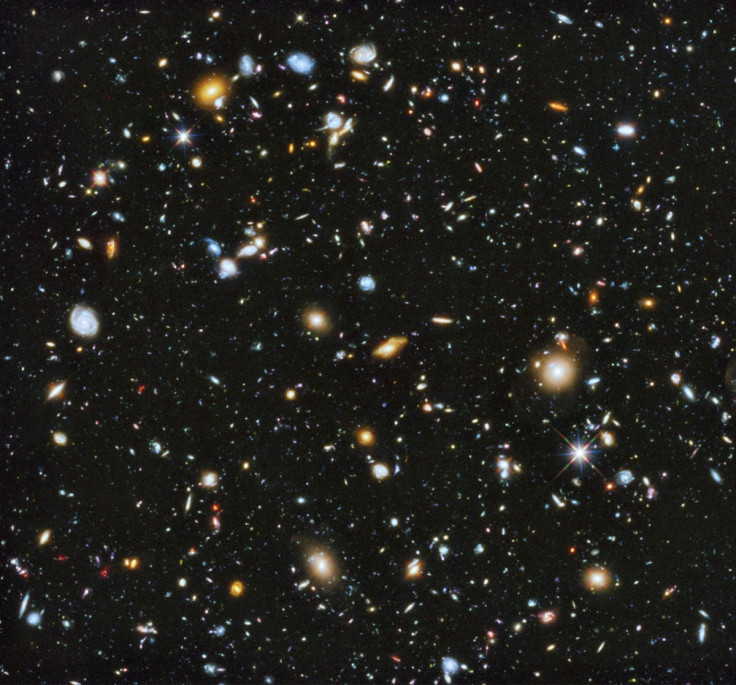Nasa's Hubble: Colourful 'Most Comprehensive' Panorama of Universe Explains Star Evolution

Astronomers have captured the most colourful and revealing image of the universe in history, which may help us understand the evolution of the cosmos.
Using the Hubble Space Telescope, scientists produced the composite image as part of the Ultraviolet Coverage of the Hubble Ultra Deep Field project.
Using 841 raw images taken during over 400 orbits of Earth between September 2003 and January 2004, by Hubble's Advanced Camera for Surveys and Wide Field Camera 3, astronomers combined the results with other Hubble images taken between 2003 and 2012 in visible and near-infrared light.
The final image was created by filling in the gaps using Hubble images of the same region in space taken in ultraviolet light, which provides new information concerning stellar formation.
The composite image shows a small region of Fornax, a constellation in the southern sky, with around 10,000 of the universe's estimated 100 billion galaxies. The colourful galaxies pictured date back as far as several hundred million years after the big bang.
"It's the deepest panchromatic image of the sky ever made. It reaches the faintness of one firefly as seen from the distance of the moon," Rogier Windhorst, of the School of Earth and Space Exploration at Arizona State University, told the Tech Times.
Other wavelengths of light, or "colours", exist beyond what the human eye is able to see. Ultraviolet light is outside visible violet light and because hot, young stars emit ultraviolet light, studying the cosmos in this spectrum allows astronomers to see the location of stars, as well as which galaxies experienced star formations.
"Ultraviolet light comes from the hottest, largest and youngest stars," Nasa said in a statement, as reported by Fox News. "By observing at these wavelengths, researchers get a direct look at which galaxies are forming stars and where the stars are forming within those galaxies."
The latest Hubble pictures were described by the agency as being "among the most colourful deep space images ever captured by the 24-year-old telescope".
Before ultraviolet images were available, astronomers were only able to see such stars in their primitive stages by photographing using Hubble in near-infrared. Telescopes based on Earth are not able to take images in ultraviolet because the majority of the might is filtered by our planet's atmosphere.
Harry Teplitz, an astronomer at Caltech, told the LA Times: "It is a small patch of sky, much smaller than the size of the moon, but because Hubble can see light from very distant galaxies, it goes back 12 billion years. The reason you can see so many galaxies in the image is because they are at many different distances."
Astronomers also also able to learn more about star formation in nearby galaxies with missions such as Nasa's Galaxy Evolution Explorer, which studied galaxies closer to our own in ultraviolet light.
© Copyright IBTimes 2025. All rights reserved.






















